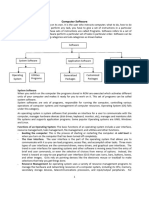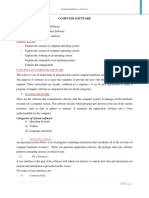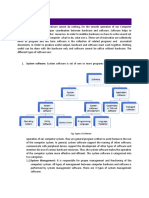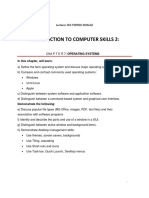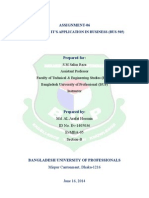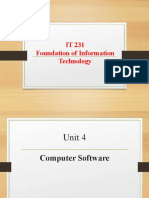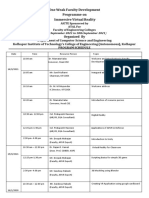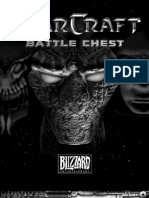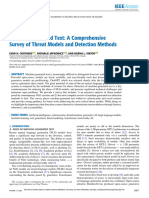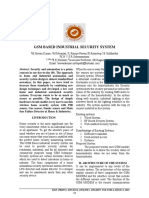0% found this document useful (0 votes)
19 views10 pagesComputer Software
This document defines computer software and classifies it according to purpose and acquisition. It discusses system software, which performs fundamental operations to make computer resources available to users, and application software, which is designed to help users accomplish specific tasks. Software is also classified as in-house developed, vendor off-the-shelf, proprietary, open source, freeware, and shareware based on its licensing and distribution model. The document then defines operating systems and types of operating systems according to the number of tasks, users, and user interface. It concludes by describing the core functions of operating systems, including memory, processor, device, and file management.
Uploaded by
ksimiyu664Copyright
© © All Rights Reserved
We take content rights seriously. If you suspect this is your content, claim it here.
Available Formats
Download as PPTX, PDF, TXT or read online on Scribd
0% found this document useful (0 votes)
19 views10 pagesComputer Software
This document defines computer software and classifies it according to purpose and acquisition. It discusses system software, which performs fundamental operations to make computer resources available to users, and application software, which is designed to help users accomplish specific tasks. Software is also classified as in-house developed, vendor off-the-shelf, proprietary, open source, freeware, and shareware based on its licensing and distribution model. The document then defines operating systems and types of operating systems according to the number of tasks, users, and user interface. It concludes by describing the core functions of operating systems, including memory, processor, device, and file management.
Uploaded by
ksimiyu664Copyright
© © All Rights Reserved
We take content rights seriously. If you suspect this is your content, claim it here.
Available Formats
Download as PPTX, PDF, TXT or read online on Scribd
/ 10








